Taxonomy
Family: Megachilidae
Subfamily: Megachilinae
Tribe: Anthidiini
Genus: Pseudoanthidium, Friese 1898
Subgenus: Pseudoanthidium, Friese 1898
Species: Pseudoanthidium xinjiangense (Wu, 2004)
Background
Pseudoanthidium xinjiangense are relatively small, 6-7 mm bees. Only the female of the species is known. They have a predominantly black
integumentintegument:
a tough, protective outer layer
with symmetrical yellow markings on their face,
tergaterga:
the segments on the top side of the abdomen, often abbreviated when referring to a specific segment to T1, T2, T3, T4, T5, T6, or T7
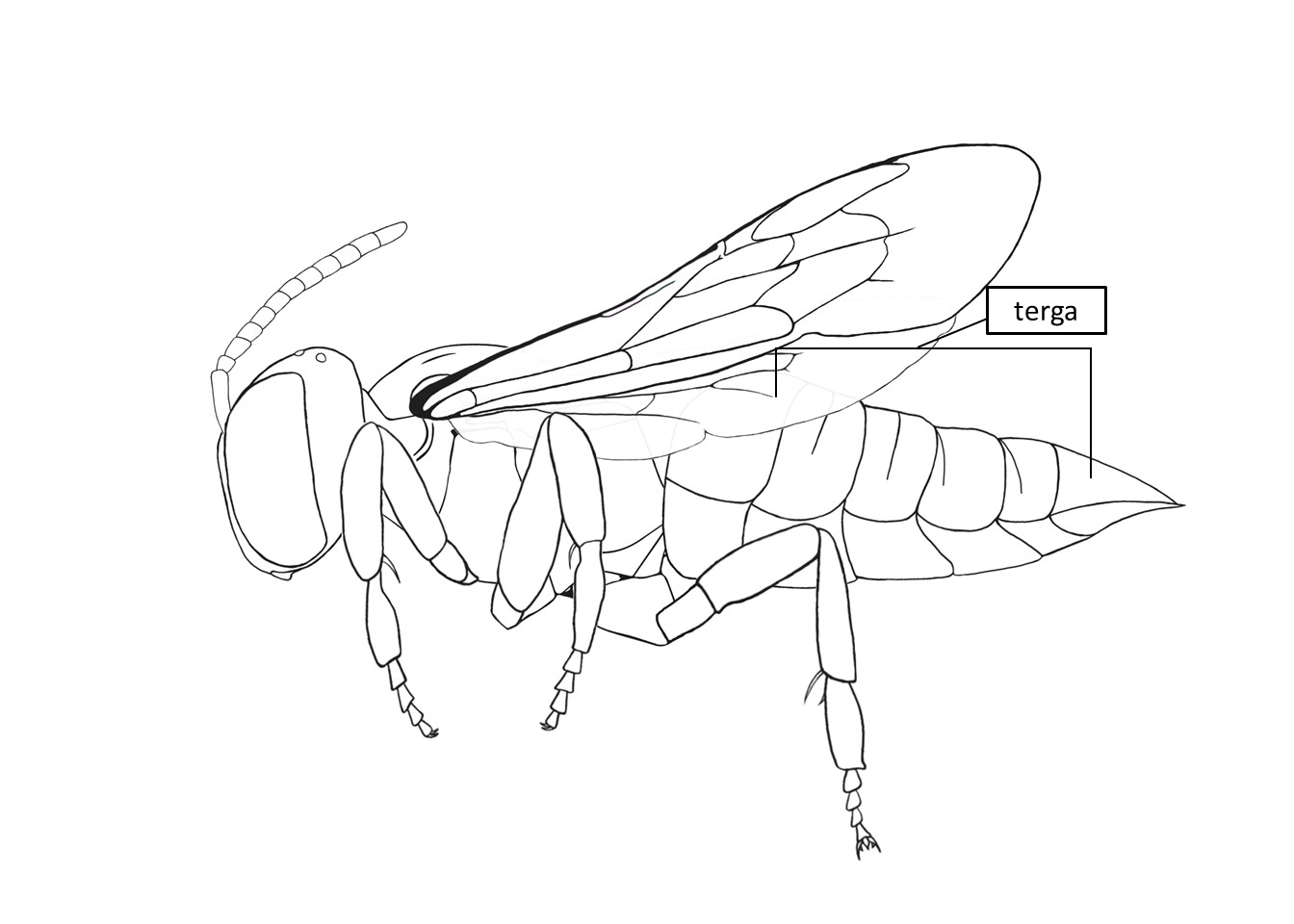
, and often the
scutellumscutellum:
shield shaped plate behind scutum
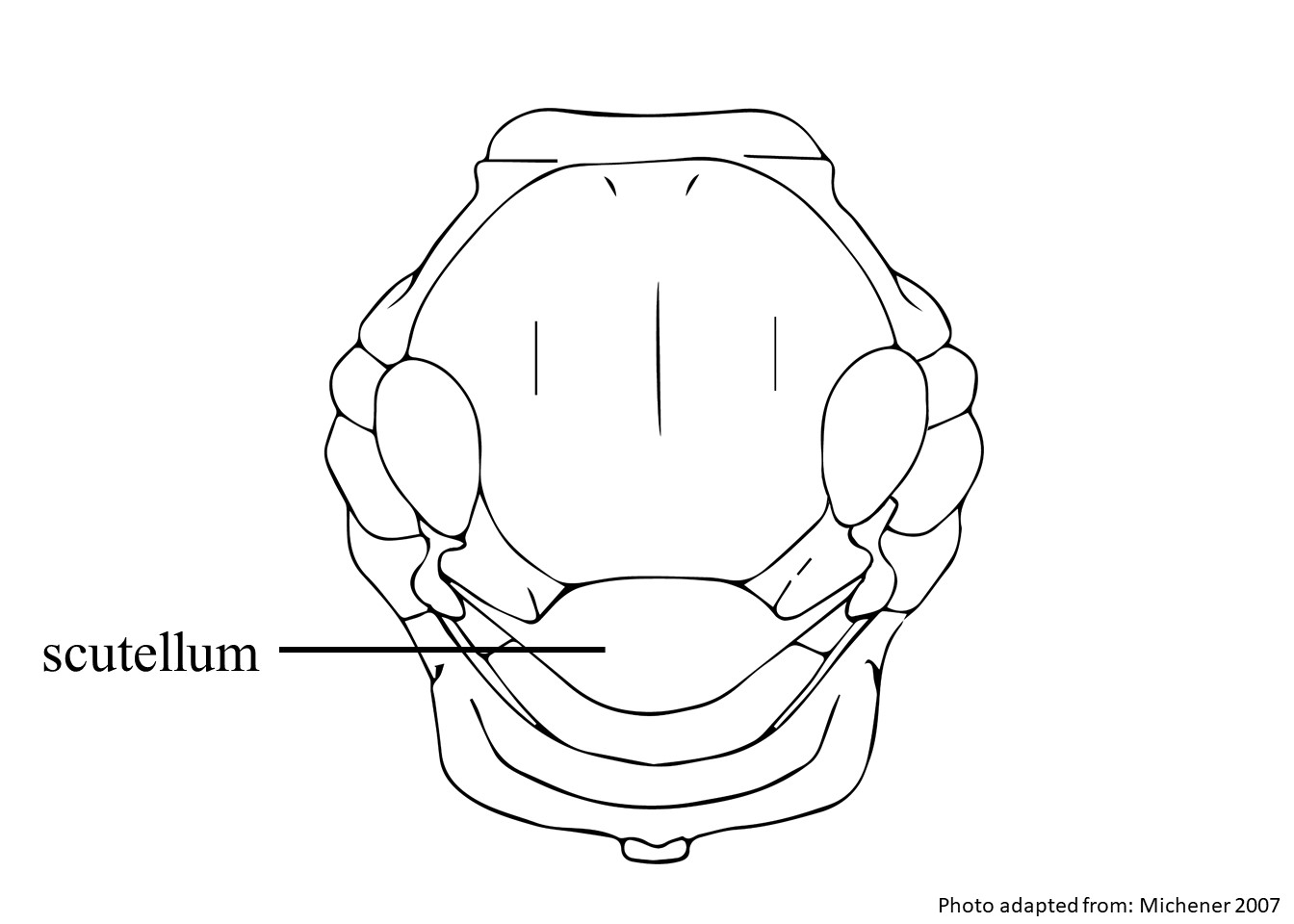
. Their legs are predominantly yellow-orange and may be black at the base. The female has red-orange mandibles with 5 black teeth. They have small yellow portions on their face and their
clypeusclypeus:
a section of the face below the antennae, demarcated by the epistomal sutures
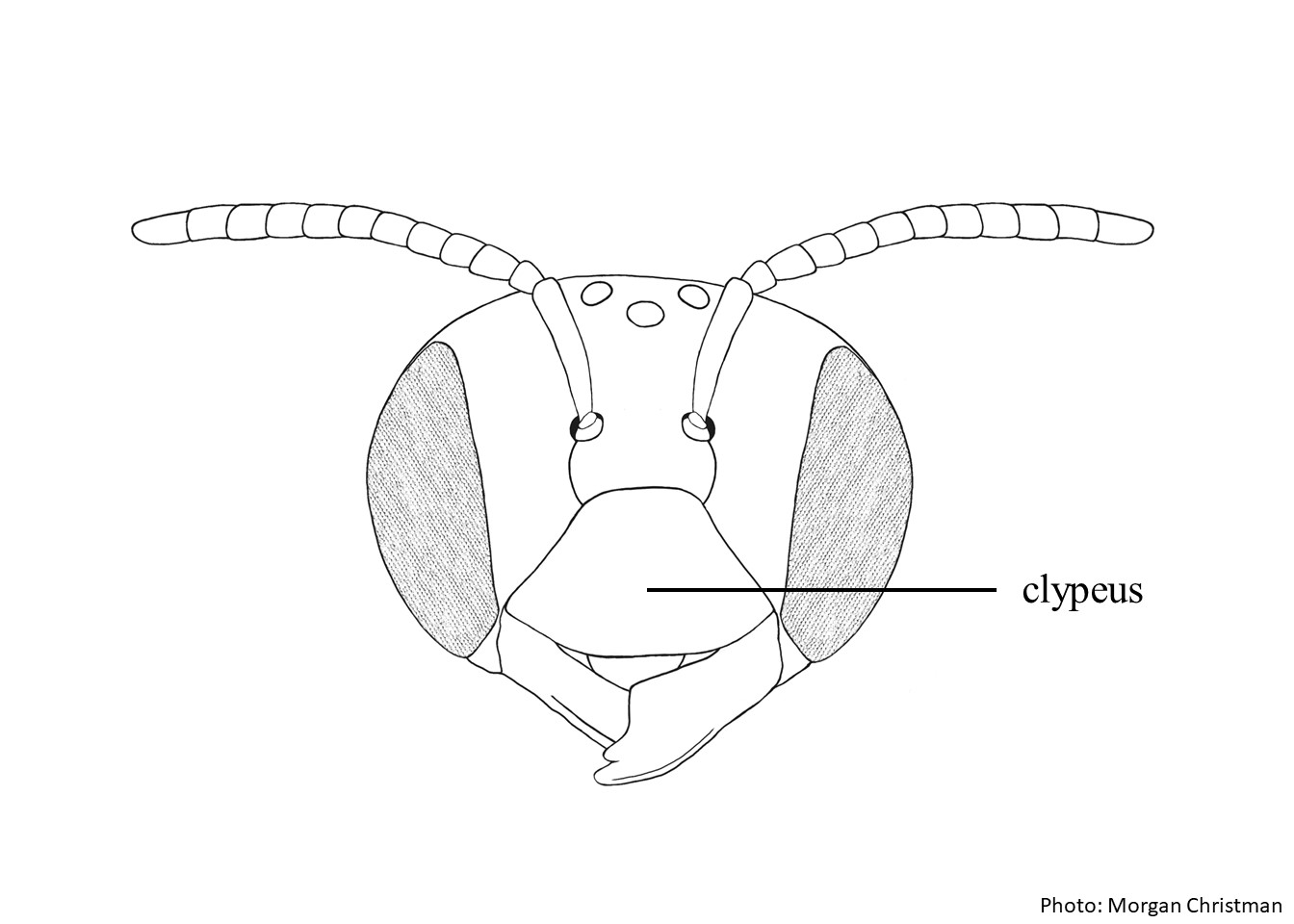
is yellow with a central black section and thin, white
pubescencepubescence:
short, fine hair
that covers most of their body. Their wings are a translucent dark brown (
Niu et al. 2021Niu et al. 2021:
Niu, Z., Luo, A., Griswold, T., Zhu, C. 2021. Review of the bee genus Pseudoanthidium Friese, 1898 (Hymenoptera: Apoidea: Megachilidae: Anthidiini) of China with descriptions of three new species. Zootaxa, 4996 (1): 133–152.;
Wu 2004bWu 2004b:
Wu, Yan-Ru. 2004. The first record of the genus Anthidiellum Cockerell 1904 from China with descriptions of three new species (Apoidea, Megachilidae, Anthidiini). Acta Zootaxonomica Sinica, 29(4): 774-777.).
Distribution
Pseudoanthidium xinjiangense is known from China (
Niu et al. 2021Niu et al. 2021:
Niu, Z., Luo, A., Griswold, T., Zhu, C. 2021. Review of the bee genus Pseudoanthidium Friese, 1898 (Hymenoptera: Apoidea: Megachilidae: Anthidiini) of China with descriptions of three new species. Zootaxa, 4996 (1): 133–152.).
Host associations
Pseudoanthidium xinjiangense has been reported visiting the Onagraceae species
Epilobium angustifolium (
Niu et al. 2021Niu et al. 2021:
Niu, Z., Luo, A., Griswold, T., Zhu, C. 2021. Review of the bee genus Pseudoanthidium Friese, 1898 (Hymenoptera: Apoidea: Megachilidae: Anthidiini) of China with descriptions of three new species. Zootaxa, 4996 (1): 133–152.).
Diagnostic characteristics
(Modified from Niu et al. 2021Niu et al. 2021:
Niu, Z., Luo, A., Griswold, T., Zhu, C. 2021. Review of the bee genus Pseudoanthidium Friese, 1898 (Hymenoptera: Apoidea: Megachilidae: Anthidiini) of China with descriptions of three new species. Zootaxa, 4996 (1): 133–152. and Wu 2004bWu 2004b:
Wu, Yan-Ru. 2004. The first record of the genus Anthidiellum Cockerell 1904 from China with descriptions of three new species (Apoidea, Megachilidae, Anthidiini). Acta Zootaxonomica Sinica, 29(4): 774-777.)
-
Clypeus clypeus:
a section of the face below the antennae, demarcated by the epistomal sutures
 with some maculations but not entirely yellow.
with some maculations but not entirely yellow.
-
Mandible mandible:
bee teeth, so to speak, usually crossed and folded in front of the mouth
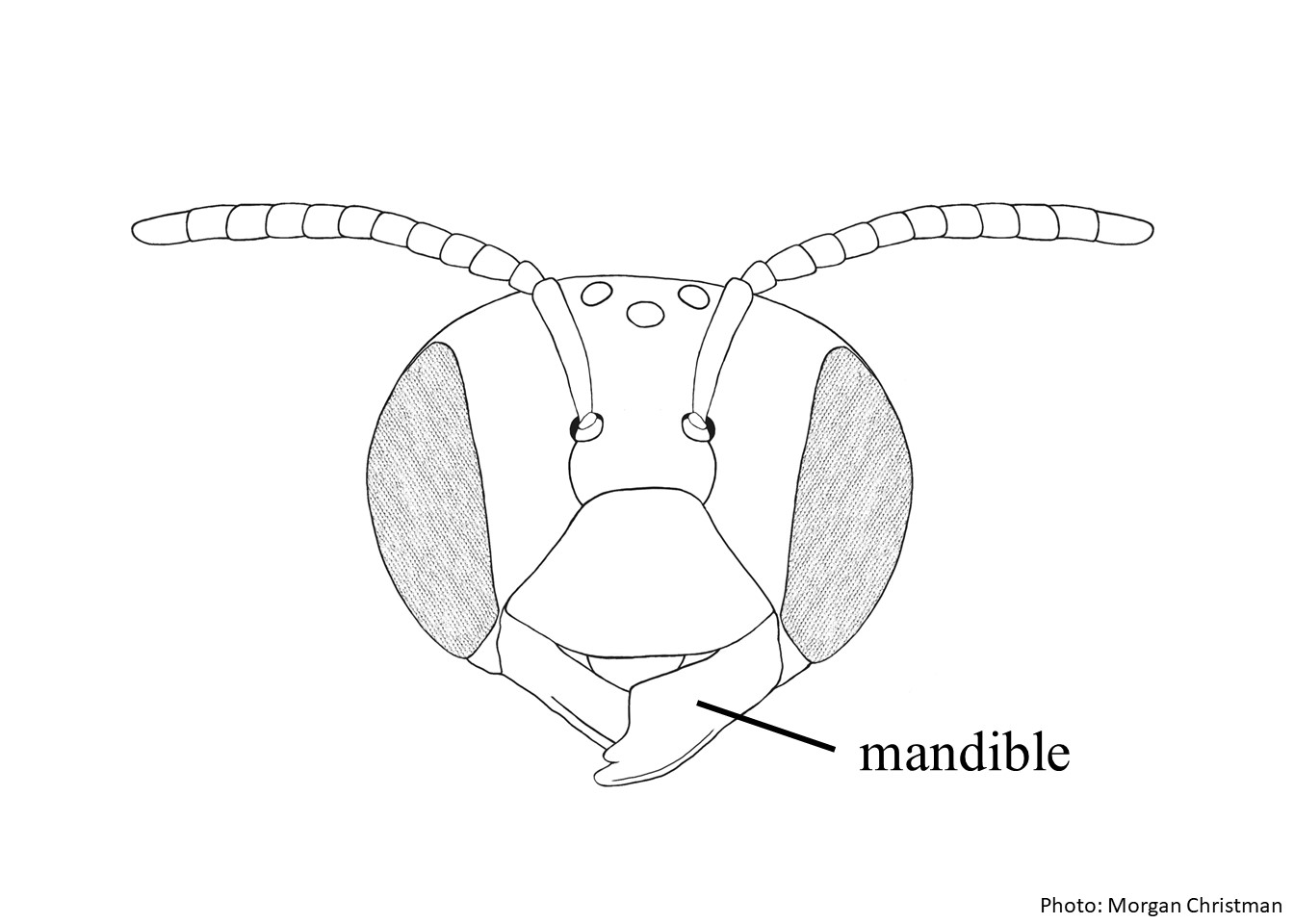 with 5 teeth.
with 5 teeth.
-
Paraocular paraocular:
the area extending along the sides of the face parallel to the eye
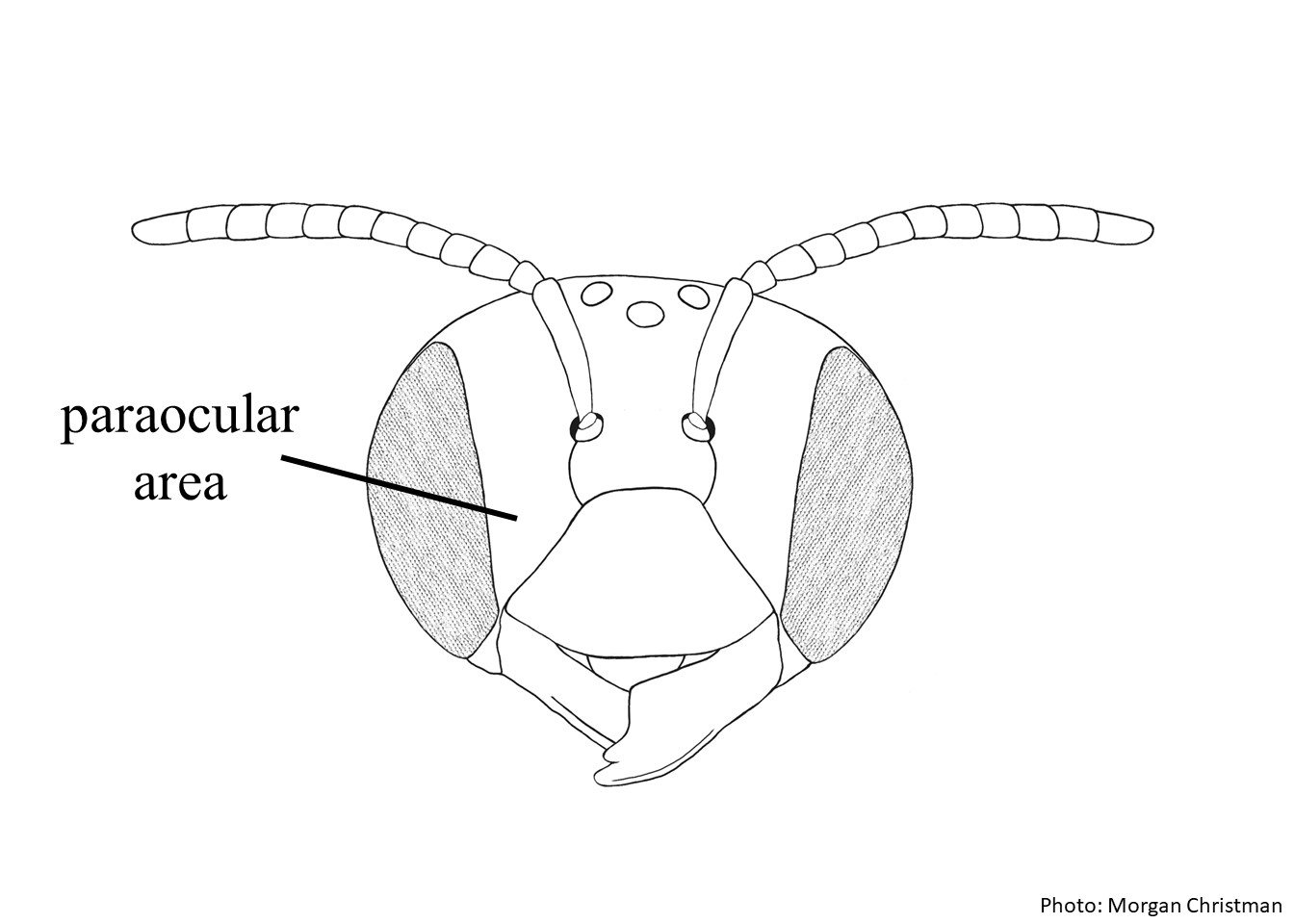 maculations only up to the level of the antennal socket.
maculations only up to the level of the antennal socket.
-
Frons frons:
the area between the antennae and ocelli on the bee's head
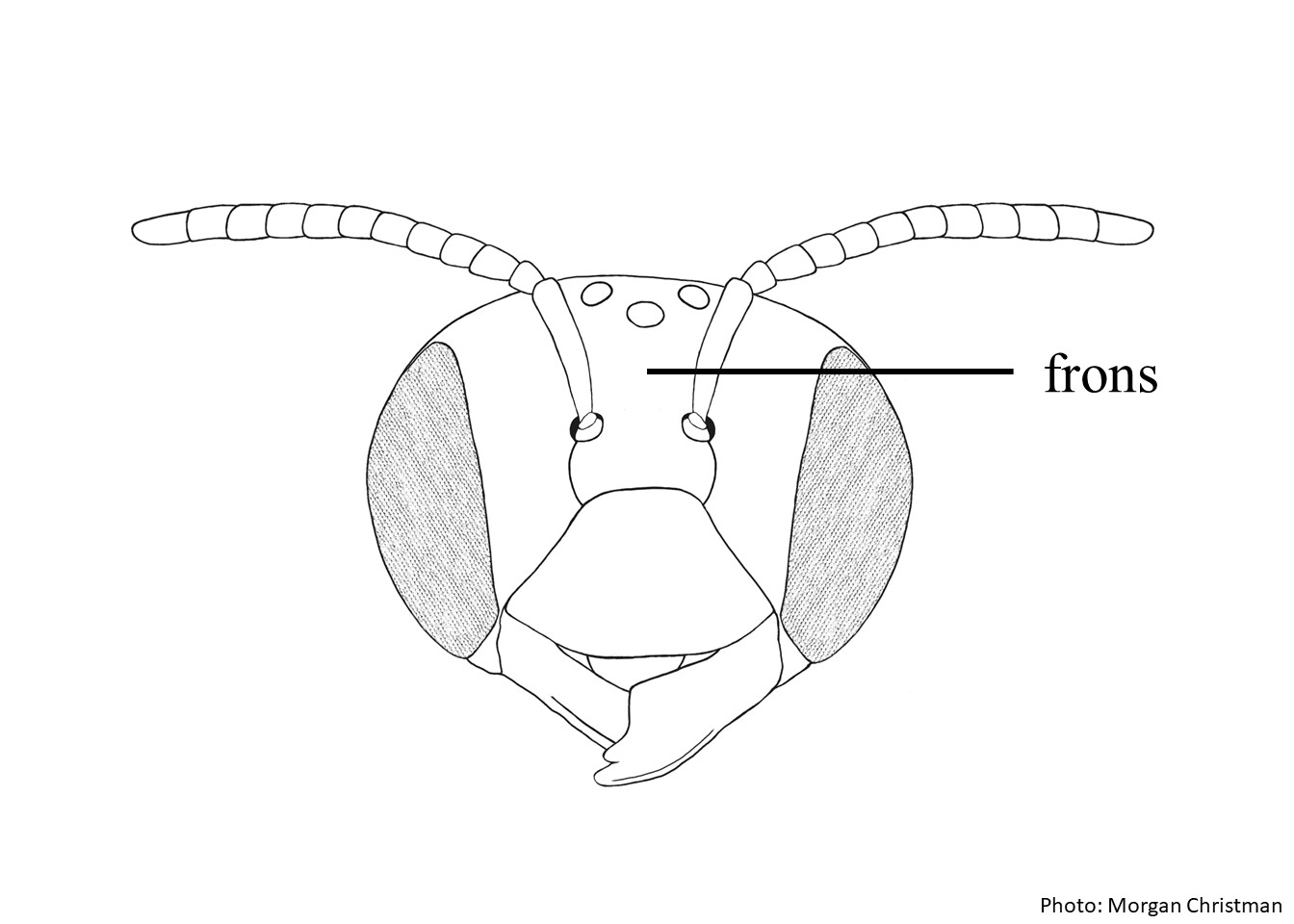 without maculations.
without maculations.
-
Propodeum propodeum:
the last segment of the thorax
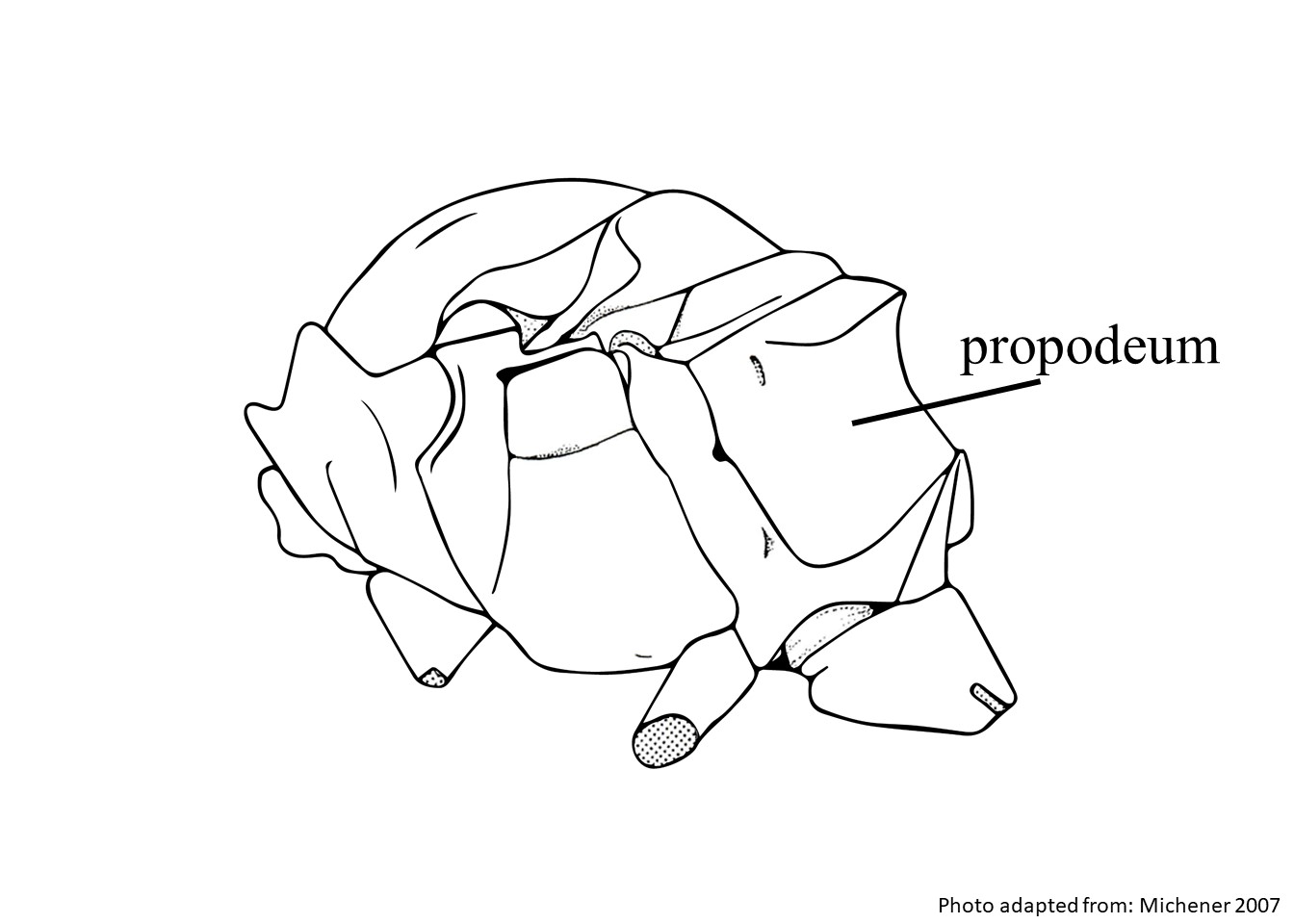 with well defined, but not carinatecarinate:
with well defined, but not carinatecarinate:
having keels or carinae
, foveafovea:
a depressed region of cuticle; in bees this depressed area is usually only very slightly hollow and usually on the face.
behind the spiraclespiracle:
a breathing pore, usually occurring on the third thorasic segment
.
-
Punctures on the scutellumscutellum:
shield shaped plate behind scutum
 and basalbasal:
and basalbasal:
originating at the foundation of a structure
part of T1T1:
the segments on the top side of the abdomen, often abbreviated when referring to a specific segment to T1, T2, T3, T4, T5, T6, or T7
 larger than on the vertexvertex:
larger than on the vertexvertex:
the area between the ocelli and the back of the head
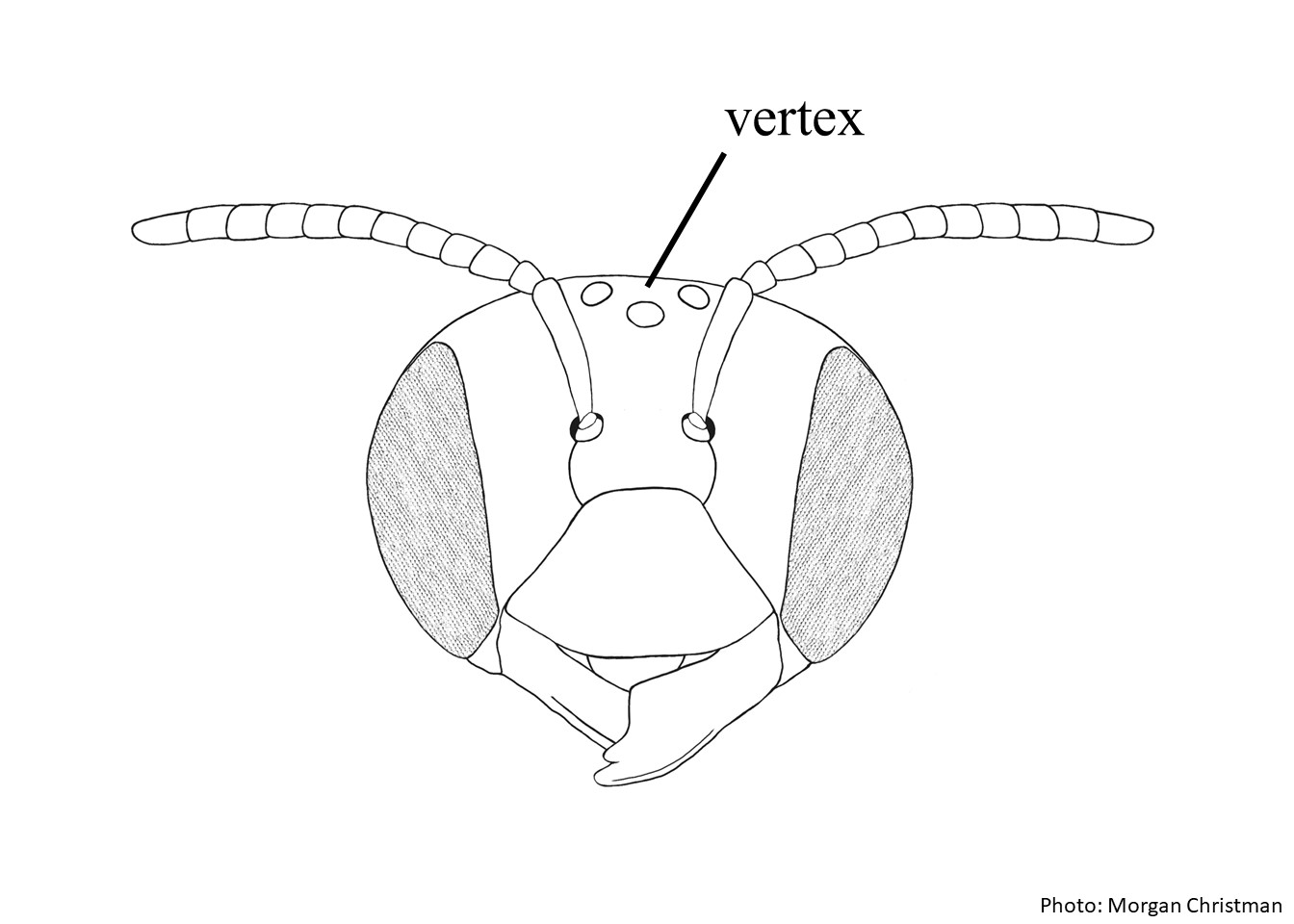 .
.
May be confused with
Pseudoanthidium xinjiangense is similar to
P. cribratum but differs in the dark
supraclypeal areasupraclypeal area:
the region of the head between the antennal sockets and clypeus, demarcated on the sides by the subantennal sutures
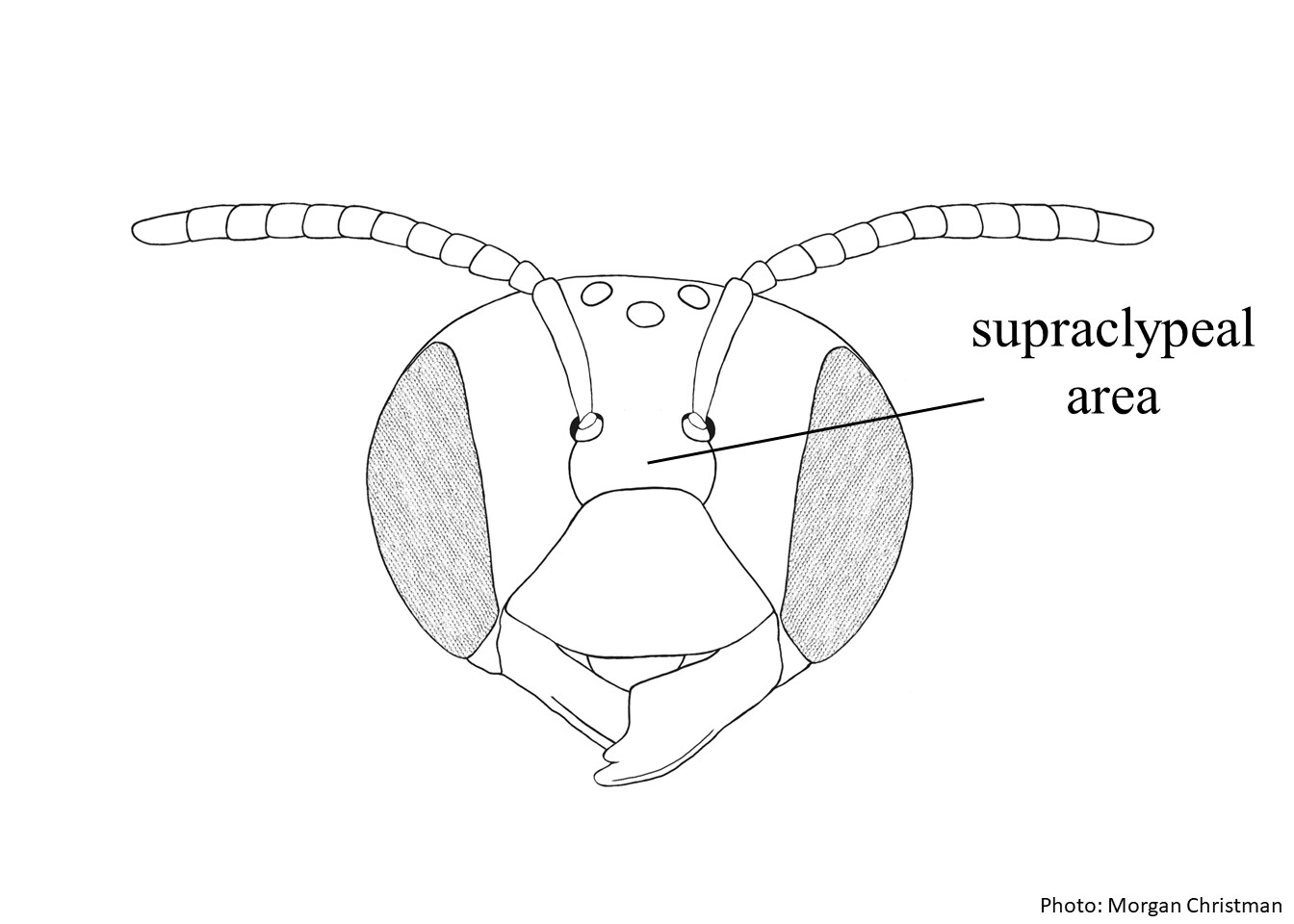
,
axillaaxilla:
the triangular or rounded point on the thorax where thoracic muscles meet the forewing of an insect
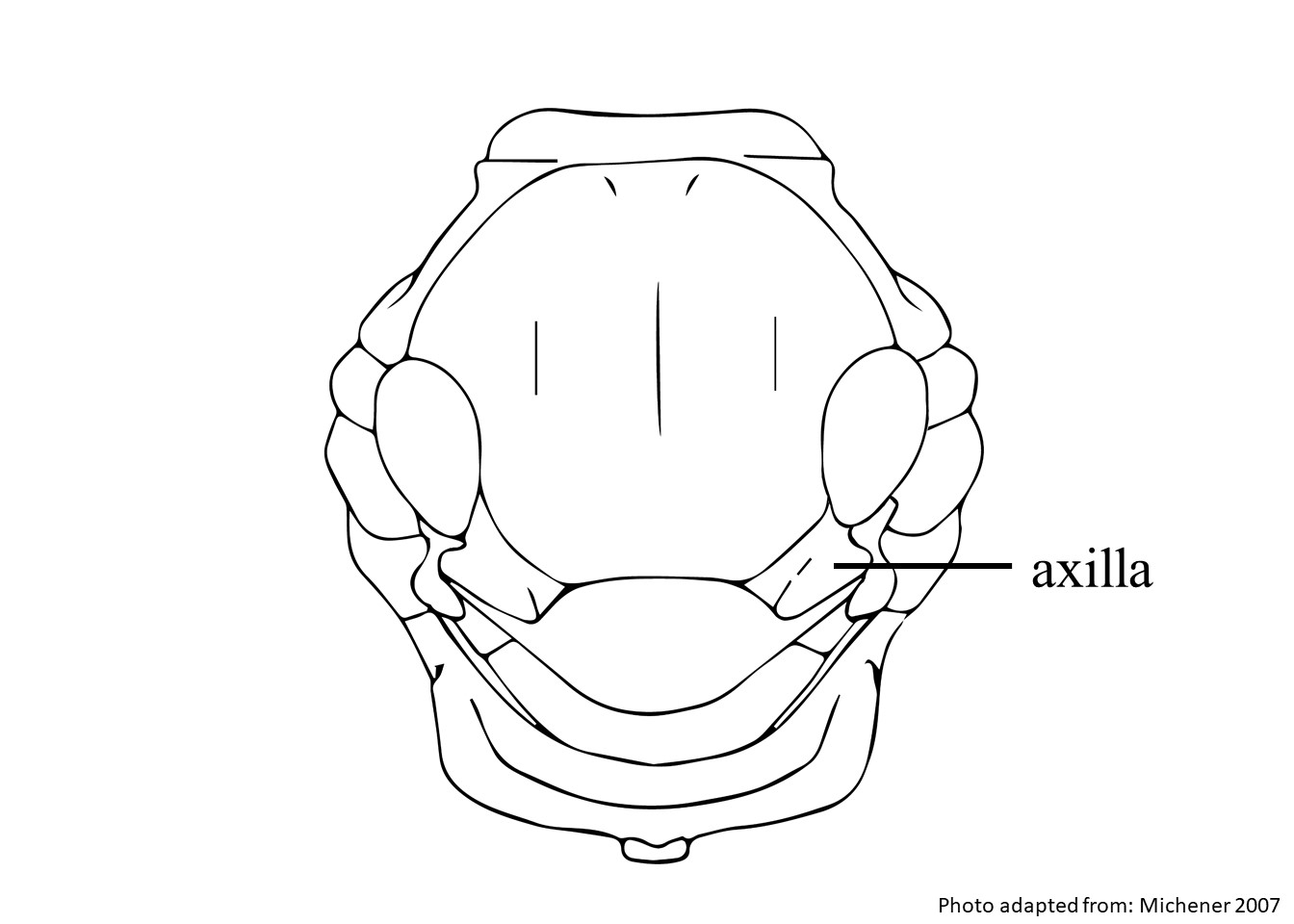
, and smaller macululations on the
clypeusclypeus:
a section of the face below the antennae, demarcated by the epistomal sutures

and
tergaterga:
the segments on the top side of the abdomen, often abbreviated when referring to a specific segment to T1, T2, T3, T4, T5, T6, or T7

(
Wu 2004Wu 2004:
Wu, Y. 2004. Ten new species of the tribe Osmiini from China (Apoidea, Megachilidae, Osmiini). Acta Zootaxonomica Sinica 29: 531ndash;537.). It is also similar to
P. circinatum but can be differentiated by the presence of
foveafovea:
a depressed region of cuticle; in bees this depressed area is usually only very slightly hollow and usually on the face.
behind the
propodeal spiraclepropodeal spiracle:
the spiracle bordering the posterior margin of the propodeum
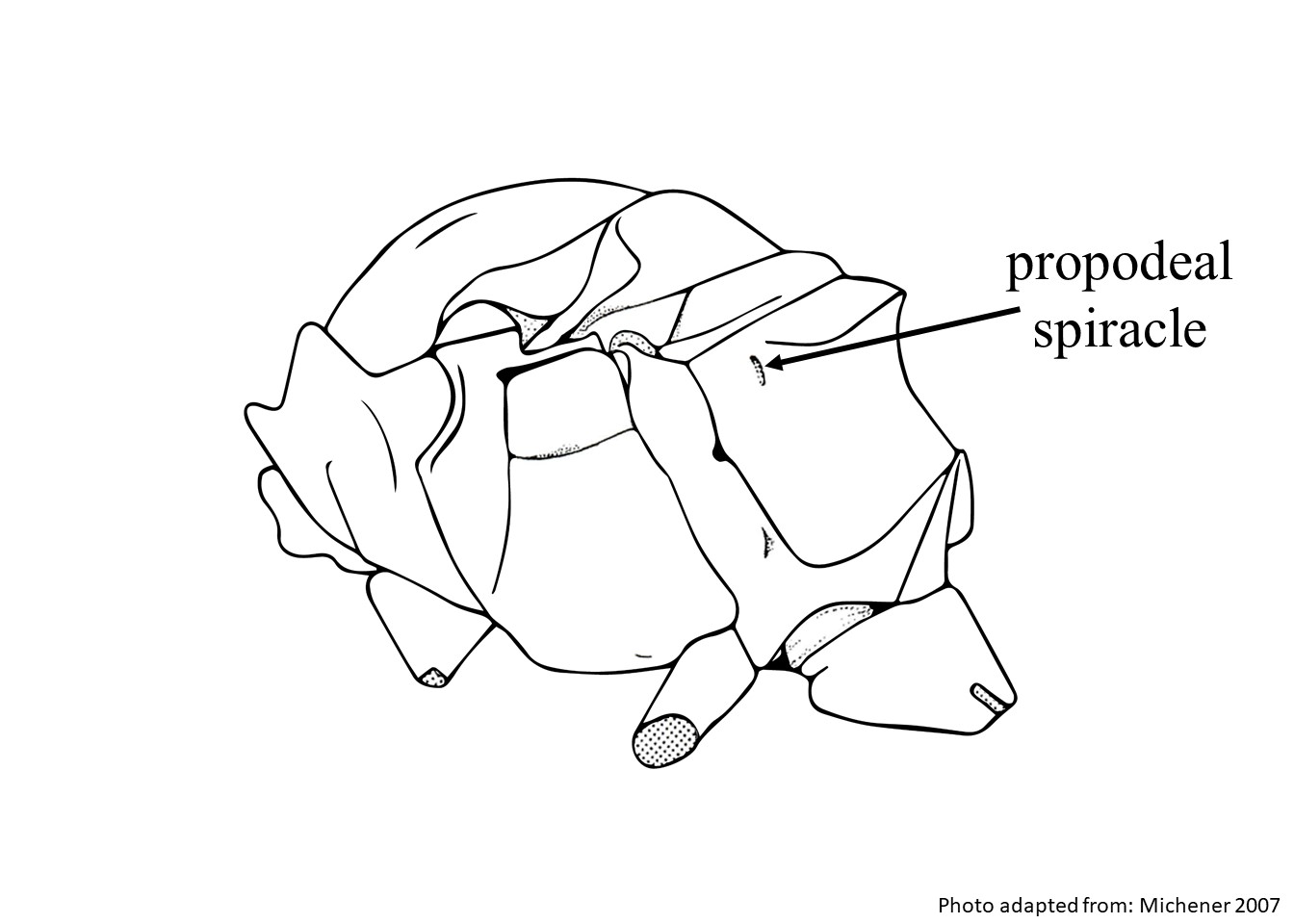
(
Niu et al. 2021Niu et al. 2021:
Niu, Z., Luo, A., Griswold, T., Zhu, C. 2021. Review of the bee genus Pseudoanthidium Friese, 1898 (Hymenoptera: Apoidea: Megachilidae: Anthidiini) of China with descriptions of three new species. Zootaxa, 4996 (1): 133–152.).
Nesting behavior
Little is known about the nesting biology of
Pseudoanthidium xinjiangense but most species of
Pseudoanthidium nest in pre-existing cavities in wood, stems, galls, or crevices (
Litman et al. 2021Litman et al. 2021:
Litman, J. R., Fateryga, A. V., Griswold, T. L., Aubert, M., Proshchalykin, M. Y., Le Divelec, R., Burrows, S. & Praz, C. J. 2022. Paraphyly and low levels of genetic divergence in morphologically distinct taxa: revision of the Pseudoanthidium scapulare complex of carder bees (Apoidea: Megachilidae: Anthidiini). Zoological Journal of the Linnean Society, 195(4): 1287-1337.).
Known invasives
There are no known invasives
 , and often the scutellumscutellum:
, and often the scutellumscutellum:with some maculations but not entirely yellow.
with 5 teeth.
 maculations only up to the level of the antennal socket.
maculations only up to the level of the antennal socket.without maculations.
with well defined, but not carinatecarinate:
and basalbasal:
 larger than on the vertexvertex:
larger than on the vertexvertex:.
 (Wu 2004Wu 2004:
(Wu 2004Wu 2004: